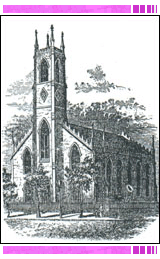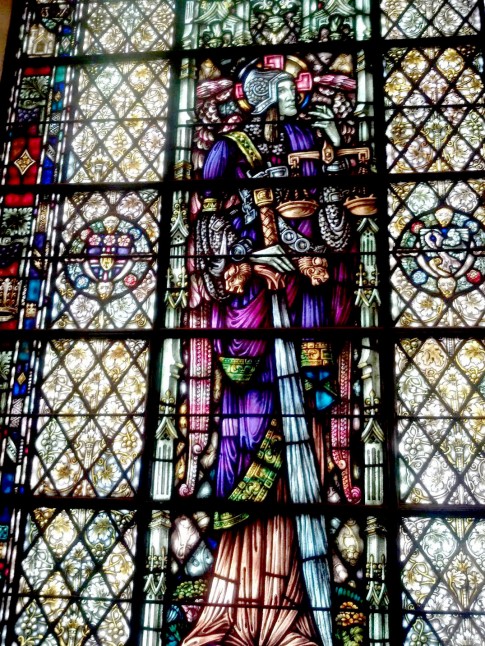
Rutgers Presbyterian Church on West 73rd Street.
One reason I became an architect was to make a positive impact in my community. My current RAND assignment at the historic Rutgers Presbyterian Church, on West 73rd Street near Broadway, only a block from my home, presents an opportunity—and challenge.
Rutgers Church was founded in 1798 in lower Manhattan, between Henry and Rutgers streets, on a plot of land donated by Colonel Henry Rutgers (from whom the street and church took their names). Rutgers, who was a colonel in the Revolutionary War, also endowed Rutgers University. The congregation moved several times before settling at its present location in 1887, in a new rusticated brownstone corner structure.
In 1925, Henry Otis Chapman designed the current complex of church house, sanctuary, and commercial building. A bank has continuously occupied several floors of the Classical Revival-styled commercial building, which has a distinctive four-sided corner clock. This space is depicted on the original blueprints as having high ceilings and elaborate moldings inside. The sanctuary, which like the church house is neo-Georgian in style, has its entry on West 73rd Street, affording the commercial building a prime corner spot.

Rutgers Church was founded in 1798 in lower Manhattan. It moved to its present site in 1925.
RAND is working with the church on several repair and upgrade projects, including replacing the roof and exhaust fans, repairing masonry, and converting the heating system from oil to gas fuel. A major challenge has been staging the work so that the church’s many programs can continue through a year of construction, which will affect every room in the complex. Upcoming projects in design at RAND are a promenade green roof and a distinctive sidewalk with benches, bike racks, a magazine kiosk, and additional trees. The RAND multi-disciplinary team includes Steven Tingir, John Monroe, David Brijlall, David Yuan, Cesar Macias, Eugene Gurevich, Christine Hobson, Yessica Marinez, Sara Macias, Michael Langwell, and Colin Fitzgerald. The contractor is Central Construction Management, LLC.
The church sanctuary features brilliant stained glass windows designed by G. Owen Bonawit, who produced the decorative windows of the Sterling Memorial Library at Yale and those at Harkness Chapel at Connecticut College. Designed in the English Gothic style, the windows are comprised of colored glass and painted segments anchored by leading. Their beauty has not faded, but several windows have small breaks, and there is build-up of dirt and debris on hard-to-access places. Repair and cleaning are being studied, as is the replacement of protective storm windows.

The church's sanctuary features brilliant stained glass windows.
The proposed promenade green roof plan incorporates new green roof technologies with special landscaping. Canopies, pathway pavers and plantings will enable the congregation to host such events as potluck suppers, prayer services, and bible studies in the open air.
Like most construction projects, those at Rutgers Church have had their share of unforeseen complications. Shortly after the 25-year-old roof was removed, heavy rains and high winds hit the church hard. A temporary roof was laid and protective measures were put in place over several weekends so the roof project could resume.
Because the sanctuary and church house are both located within the newly designated West End Collegiate Historic District Extension, construction work requires review by the New York City’s Landmarks Preservation Commission, adding to the project timeline. (The commercial building, joined inside on some floors to the church house but located on a different lot on the corner of West 73rd Street and Broadway, falls outside the boundary of the district and therefore is not subject to LPC’s purview.)
Living nearby, I walk by the church often, allowing me to see the progress of the work. Proximity to the church makes me more available at short notice—which was particularly true during the heavy rainstorms. That is a mixed blessing, but I appreciate the opportunity to work on a project in my own backyard and to visualize future benefits to the neighborhood.
